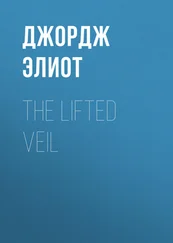Maybe that is why, when I read about all those awards in the first account published in the back cover of her first autobiography, I felt relieved. I came to feel closer to Phyllis Nelson 4and her longing for visibility and recognition, so it was a relief to read that she became such a successful writer. Her voice, in addition, was echoing the voices of previous women engaging in the act of writing: “that publicity in women is detestable. Anonymity runs in their blood. The desire to be veiled still possesses them” (Woolf 58).
Nevertheless, I also felt disappointed. Not because I could not find her phone number , but because it could be dangerous to summarize her life and literary career in a cold list of achievements that lost its real meaning when presented in an emotionless inventory. By failing to take into account other important details that explain the value of her writing, the importance of those awards could be minimized or even misunderstood.
Therefore, I believe that the truly appropriate and useful facts about Barber’s life in order to implement a thorough analysis of her work were only briefly mentioned on the inside jacket of her novel: that she is a mother and that she was raised in Las Vegas and Boulder City but then moved. The fact that she was raised in those two places, together with the fact that she was a mother, are two of the relevant facts garnered from the biographical information provided on her books. Motherhood (or, in a wider sense, gender ) is very important to understand the meaning of Barber’s fiction. Place (especially departing from a place) is also an important aspect of her writing.
Two other important components for my analysis of Barber’s work are also inferred from the information given in her biographical blurbs. Firstly, the only detail which two of these accounts include: that she is a musician; that, apart from being a writer, she is also a pianist. Secondly, something that goes unnoticed, but is tacitly present in all these accounts; a fourth feature that interacts with the other three in order to make Barber’s literature even richer and more complex: that she was a member of The Church of Jesus Christ of Latter-day Saints.
Art , on the one hand, and religion on the other; plus gender and place . These four topics constitute the pillars of this research: gender (motherhood), place (Nevada), religion (Mormonism) and art (music). My aim is to develop them in order to attain a complete analysis of Barber’s work. These four pillars are those that Terry Tempest Williams calls “biases” or “lenses”: “gender, geography, and culture” (Austin, Voice 68); Mormonism as “one of the lenses I see the world through” (Austin, Voice 155). They—whether it is called biases or lenses—imply coming from the inside to the outside. These terms do not symbolize a set of rules imposed from the outside, but a set of beliefs and cultural values adopted and accepted that shape her perception of the world.
All four of them interact in her work. They can be said to be the cause and the consequence of her involvement in the world of writing—“a dangerous thing to do” (Barber, Mormon 109). Gender , place , religion and art are extremely useful in the analysis of her autobiographical works, How I Got Cultured: A Nevada Memoir and Raw Edges: A Memoir . But all four of them can also be found in the depiction of many of her fictional characters or the building of her creative landscapes. These four elements, therefore, facilitate a thorough analysis of Barber’s involvement in professional writing—her motivations and interests. They also are essential for establishing a proper method of analysis to approach her fiction.
In fact, real life and fiction are often blurred in writing, and that is definitely true of Barber’s work. This characteristic of her work is totally predictable, after reading how she understands the act of writing. Her conception of writing eradicates the distinction between real life and fiction, connecting them both in a close relationship: “Writing is only a way I’ve chosen, my pick and shovel as I dig out my life and make shapes of it” (Barber, Mormon 109). How I Got Cultured: A Nevada Memoir transcends the conventional definition of memoir—if one should understand this genre as a chronological life history either presented from the beginning to the end or as a fragmented array of essays. Barber’s would fit in the second, but her serialized sections are neither essays nor even pieces that followed a clear line, they are short pieces of biographical material, dressed with the attributes of fiction, structured with the measure of a short story, and with a nature of themselves—an independence of coherent meaning and emotion that makes them have an internal connection. In fact, one of the sketches in which she divided her first autobiography, “Oh, Say, Can You See?,” was first published as a piece of fiction in The School of Love . Likewise, in “The Practice of Simple Faith,” Barber shows part of the body of feelings from which the character of Esther Jensen in And the Desert Shall Blossom was born, even if she is talking about herself: “One of my greatest stumbling blocks in the marriage was my inability to face, literally, the truth of my situation. I held onto the ideal as if it were a life boat and couldn’t see that we’d been stuck for years, locked in a grid and unable to shift from our positions. Something needs to change” (Barber, Mormonism 17). 5
As it happens with How I Got Cultured , Raw Edges does also alter the conventional definition of memoir. Elizabeth Breau states that this autobiography symbolizes “Barber’s earnest efforts to accept the beliefs of the original tenets of Mormonism is testament to her belief in her marriage vows” (Breau 1). Marriages are a fundamental tenet of Mormonism. They are central to family and family, as Howard Hunter states, is “the most important unit in time and in eternity” (51). Boyd K. Packer adds that “the family is safe within the Church” (22). In Raw Edges , Barber offers an openhearted account of her failure. However, before publishing Raw Edges , Barber published “Body Blue: Excerpts from a Novoir” in Dialogue: A Journal of Mormon Thought in 2003—a little sample of what was to come in Raw Edges . In a footnote reference, Barber tells about her marriage to David Barber, which will be portrayed in Raw Edges : “This is not a ‘kiss and tell’ or ‘here comes the judge’ account, but rather a recognition that there are many whose idealism gets caught beneath the intersecting wheels of Mormonism and of contemporary life” (Barber, Body 68). The book can be approached as a study on marriage—a failing marriage
These examples illustrate the close connection between Barber’s life and her fiction. In her literary production, real life and fiction blend and mingle as if only a thin veil separates heaven and earth, reality and imagination, life and literature. Thus, the four elements that I selected from her biography are justified as proper features to exercise my analysis. Moreover, in her fiction, I also find evidence that these four ideas are pertinent to evaluate Barber’s contribution to the literary world.
It would be appropriate, before I start with my analysis, to situate Barber’s work within Mormon literary tradition. Scholars such as Eugene England and William Mulder have placed Barber together with other contemporary Mormon writers: Linda Sillitoe, Michael Fillerup, John Bennion or Douglas Thayer. All of them write fiction under the label “New Mormon Fiction” (England, Tending xxvi). Scholars indicate interest in the work of these writers because they use unorthodox themes, characters and styles; they explore new fictional realms; they write without any complexes or restrictions but, at the same time, their writing is not alien to the expectations of faithful Mormon readers. They approach Mormonism in new ways. Barber and the other members of this so-called “New Mormon Fiction” generation are trying to blur the borders. They write from inside Mormonism but attempting to make their writing understandable—and appealing—to outsiders; at the same time, they dodge the risk to be perceived as unfamiliar—and disloyal—to insiders.
Читать дальше












